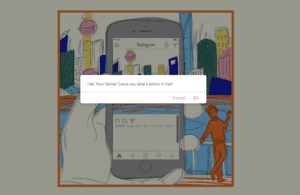It was not until I listened to this episode for the second time was I able to understand the outline of the story clearly. I find it interesting to pay special attention to the characters’ tones and intonation, which gives out the emotion states as well as the personalities of the characters. I especially enjoy listening to the “after show” interview with the CEO of the company, from which I gained many valuable insights.
The episode begins with a women, named Heidi, serving food in a canteen or restaurant. Then at some point when interrupted by a man, and it switches to another scene. There, she was having a conversation with another man, named Walter, introducing to him the program schedules and arrangements, and asking him about his settlement. I learn that the woman was a key researcher at Homecoming, supervising and conducting the program. And the man she had the conversation with was a homecoming soldier who just got out of the military and newly attended the program.
Without any context, I can tell immediately that the first conversation happens in a restaurant/canteen, while the second takes place in an office, since besides the talking, the background noises serves as key element in creating the settings. During the second conversation, the background sounds are opening the doors, turning the papers, getting and putting stuffs, and etc., which are all common noises surrounding us when we are working or studying in front of a desk. It is interesting that, we are so familiar with these sounds that we hardly pay any attention to them in our real life. When listen to stories in the form of podcast, however, we can easily recognize these sounds and relate to the scenes in our daily life. These background voices also have the effect of rendering the atmosphere. As in a later piece of the conversation, where Heidi is meeting Walter for the second time and learning about his recent life, they were interrupted by the sounds of some animals outside. This adds to my feeling that both of the characters are quite embarrassed and uncomfortable during the conversation, having different worries and hiding parts of themselves from each other.
The voices of the characters shows not only emotions, but also the personalities and social status of the characters. For instance, from Heidi’s conversation with Walter, I sense that she is very nice, patient, and caring, while Walter is a little bit nervous, trying to comfort himself, but still holds many concerns and uneasiness. I remember when Heidi asks about how’s things going, Walter answers “everything’s … fine”, but with a long pause and a dragging voices, which shows that he was hesitating to give out the answer. Heidi also senses this minor emotion changes and thus goes on asking about the problems he faces. The relationships between the characters are also vividly shown in their way of talking. As pointed out in the after-show interview, at the beginning of the scene where Heidi is having the phone call with her boss, and he was on his way to catch his flight. His voice keeps dropping in and out of the conversation, making Heidi hesitating on whether to speak. Reflecting back on our real-life experiences, when we are on the phone with someone, usually of a higher social status, and they are clearly onto some other things, talking to you on the phone while occasionally speaking to others in his surroundings, making you confused about his actual audiences when he speaks. You will normally feel nervous at such setting, especially when the other person is your boss, for fear that your call interrupts his business. This relationship is further confirmed in the audio drama, where Heidi is being very patience and cautious when talking to her boss, and even if she is interrupted and censured a couple of times during the conversation, she still shows high respect to the man’s words. And even though her proposal was denied, all I can sense from her intonation was a feeling of helplessness and disappointment. Such effect of showing interpersonal relationships is actually being exaggerated when removing all other mediums except for the audio. I find myself more focused and more sensitive to the change of emotions in people’s words when listening to the podcast.
Moving on to the audio medium, it is interesting to consider how it creates and presents a multi-dimensional scene, fitting into the real-life setting. It is able to deliver the message and contents clearly, and even without seeing it happening, we can tell the changes of the settings and characters. Audio is actually familiar to most of us. Although audio is not as popular a medium for entertainment as video such as TV series or movies, or texts such as books, or even image such as photos and comics, it is taking up an important part of our life. Making phone calls, for example, is somehow similar to listening to a podcast, for you are essentially getting others’ stories only through their voices during calls. It is quite inspiring to listen to a podcast and reflect on the message of the audio medium.



